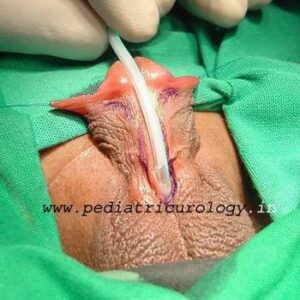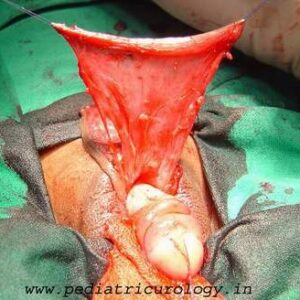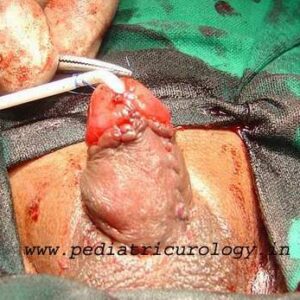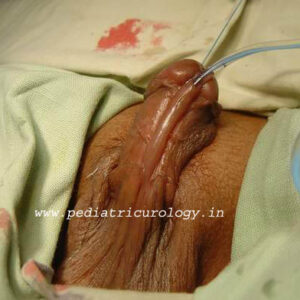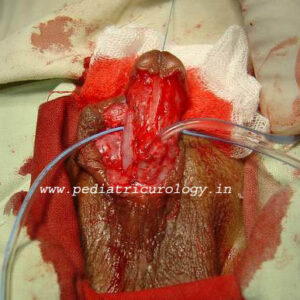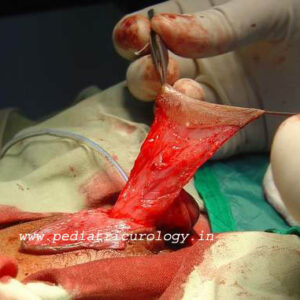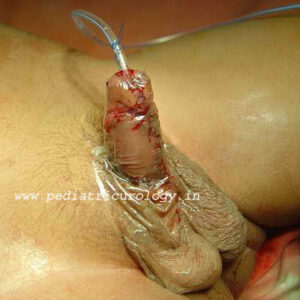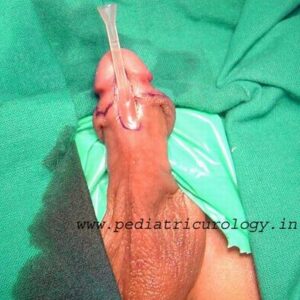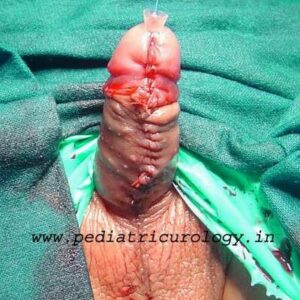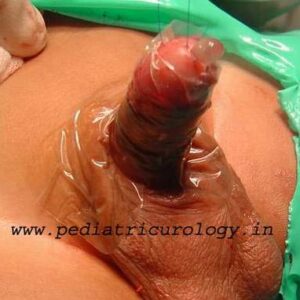B.Q., a 7-month-old baby, was brought to our clinic with an abnormal-looking penis and passage of urine from the underside of the penis. On examination, he had a scrotal hypospadias with mild chordee (an abnormality where the penis is bent downwards).
A boy with scrotal hypospadias – Transverse Island Onlay Flap urethroplasty was planned for corrective surgery. This specific case involved a single-stage urethroplasty, for which many different techniques are available. The exact technique in this case was a long transverse island flap urethroplasty.
This is the appropriate age (6-9 months) for such surgeries as the final results are very good both cosmetically and functionally at such a young age. We chose to give two doses of hormones before surgery to improve the outcome after single-stage surgery.
Since this was a very severe hypospadias, the chances of failure were higher. We decided to harvest a tunica vaginalis flap for second-layer coverage of the repair (see pictures). The tunica vaginalis is a covering of the testis and provides good second-layer coverage in such severe cases, improving the outcomes manyfold.
The baby was taken up for surgery and required only a one-day stay in the hospital. The dressing was removed on day 5 and the catheter on day 12. There was no fistula or dehiscence.
At the 3-month follow-up, he had a normal-looking circumcised penis with a urethral opening at the top of the glans.

Clinical picture showing a severe scrotal hypospadias
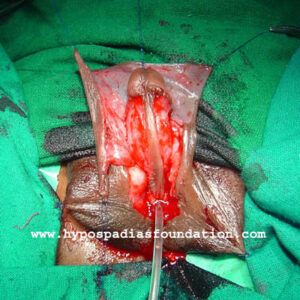
After degloving of penis and chordee correction- A long Transverse Island Prepucial Flap has been harvested and is being rotated ventrally c43 c44
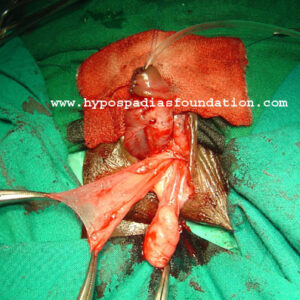
Tunica Vaginalis Flap harvested and ready to be used for second layer coverage
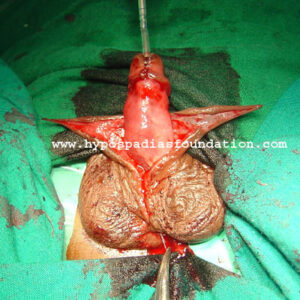
Excellent second layer coverage by tunica vaginalis flap

